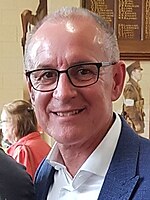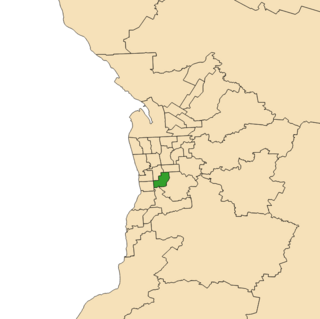
Federal elections were held in Australia on 10 November 2001. All 150 seats in the House of Representatives and 40 seats in the 76-member Senate were up for election. The incumbent Liberal Party of Australia led by Prime Minister of Australia John Howard and coalition partner the National Party of Australia led by John Anderson defeated the opposition Australian Labor Party led by Kim Beazley.

The Division of Adelaide is an Australian electoral division in South Australia and is named for the city of Adelaide, South Australia's capital.

The Division of Grey is an Australian electoral division in South Australia. The division was one of the seven established when the former Division of South Australia was redistributed on 2 October 1903 and is named for Sir George Grey, who was Governor of South Australia from 1841 to 1845.

The Division of Hindmarsh is an Australian Electoral Division in South Australia covering the western suburbs of Adelaide. The division was one of the seven established when the former Division of South Australia was split on 2 October 1903, and was first contested at the 1903 election, though on vastly different boundaries. The Division is named after Sir John Hindmarsh, who was Governor of South Australia 1836-38. The 78 km² seat extends from the coast in the west to South Road in the east, covering the suburbs of Ascot Park, Brooklyn Park, Edwardstown, Fulham, Glenelg, Grange, Henley Beach, Kidman Park, Kurralta Park, Morphettville, Plympton, Richmond, Semaphore Park, Torrensville, West Beach and West Lakes. The international Adelaide Airport is centrally located in the electorate making noise pollution a prominent local issue, besides the aged care needs of the relatively elderly population − the seat has one of the highest proportions of citizens over the age of 65 in Australia. Progressive boundary redistributions over many decades transformed Hindmarsh from a safe Labor seat in to a marginal seat often won by the government of the day.

The Division of Mayo is an Australian electoral division located to the east and south of Adelaide, South Australia. Created in the state redistribution of 3 September 1984, the division is named after Helen Mayo, a social activist and the first woman elected to an Australian University Council. The 9,315 km² rural seat covers an area from the Barossa Valley in the north to Cape Jervis in the south. Taking in the Adelaide Hills, Fleurieu Peninsula and Kangaroo Island regions, its largest population centre is Mount Barker. Its other population centres are Aldgate, Bridgewater, Littlehampton, McLaren Vale, Nairne, Stirling, Strathalbyn and Victor Harbor, and its smaller localities include Ashbourne, Balhannah, Brukunga, Carrickalinga, Charleston, Cherry Gardens, Clarendon, Crafers, Cudlee Creek, Currency Creek, Delamere, Echunga, Forreston, Goolwa, Gumeracha, Hahndorf, Houghton, Kersbrook, Kingscote, Langhorne Creek, Lobethal, Macclesfield, McLaren Flat, Meadows, Middleton, Milang, Mount Compass, Mount Pleasant, Mount Torrens, Mylor, Myponga, Normanville, Norton Summit, Oakbank, Penneshaw, Piccadilly, Port Elliot, Second Valley, Springton, Summertown, Uraidla, Willunga, Woodchester, Woodside, Yankalilla, and parts of Birdwood, Old Noarlunga and Upper Sturt.

The Division of Sturt is an Australian electoral division in South Australia. It was proclaimed at the South Australian redistribution of 11 May 1949. Sturt was named for Captain Charles Sturt, nineteenth century explorer and the first European to discover the Murray River.
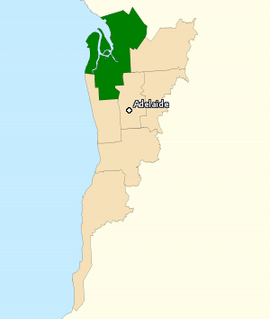
The Division of Port Adelaide is an Australian electoral division in the state of South Australia. The 181 km² seat extends from St Kilda in the north to Grange Road and Findon in the south with part of Salisbury to the east. Suburbs include Alberton, Beverley, Birkenhead, Cheltenham, Findon, Kilkenny, Largs Bay, Mansfield Park, North Haven, Ottoway, Parafield Gardens, Paralowie, Pennington, Port Adelaide, Queenstown, Rosewater, Salisbury Downs, Semaphore, Woodville, West Croydon, and part of Seaton. The seat also includes Torrens Island and Garden Island.

Adelaide is a single-member electoral district for the South Australian House of Assembly. The 22.8 km² state seat of Adelaide currently consists of the Adelaide city centre including North Adelaide and suburbs to the inner north and inner north east: Collinswood, Fitzroy, Gilberton, Medindie, Medindie Gardens, Ovingham, Thorngate, Walkerville, most of Prospect, and part of Nailsworth. The federal division of Adelaide covers the state seat of Adelaide and additional suburbs in each direction.
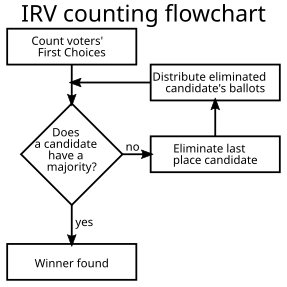
In Australian politics, the two-party-preferred vote is the result of an election or opinion poll after preferences have been distributed to the highest two candidates, who in some cases can be independents. For the purposes of TPP, the Liberal/National Coalition is usually considered a single party, with Labor being the other major party. Typically the TPP is expressed as the percentages of votes attracted by each of the two major parties, e.g. "Coalition 45%, Labor 55%", where the values include both primary votes and preferences. The TPP is an indicator of how much swing has been attained/is required to change the result, taking into consideration preferences, which may have a significant effect on the result.

A federal election was held on Saturday, 21 August 2010 for members of the 43rd Parliament of Australia. The incumbent centre-left Australian Labor Party led by Prime Minister Julia Gillard won a second term against the opposition centre-right Liberal Party of Australia led by Opposition Leader Tony Abbott and Coalition partner the National Party of Australia, led by Warren Truss, after Labor formed a minority government with the support of three independent MPs and one Australian Greens MP.

The 2010 South Australian state election elected members to the 52nd Parliament of South Australia on 20 March 2010. All seats in the House of Assembly or lower house, whose current members were elected at the 2006 election, and half the seats in the Legislative Council or upper house, last filled at the 2002 election, became vacant.

A by-election was held for the South Australian House of Assembly seat of Frome on 17 January 2009. This was triggered by the resignation of former Premier and state Liberal MHA Rob Kerin. The seat had been retained by the Liberals at the 2006 state election on a 3.4 per cent margin, and at the 2002 state election on an 11.5 per cent margin.

The 2014 South Australian state election elected members to the 53rd Parliament of South Australia on 15 March 2014, to fill all 47 seats in the House of Assembly and 11 of 22 seats in the Legislative Council. The 12-year-incumbent Australian Labor Party (SA) government, led by Premier Jay Weatherill, won its fourth consecutive four-year term in government, a record 16 years of Labor government, defeating the opposition Liberal Party of Australia (SA), led by Opposition Leader Steven Marshall.

Steven Spence Marshall is an Australian politician serving as the 46th and current Premier of South Australia. He has been a member of the South Australian Division of the Liberal Party of Australia in the South Australian House of Assembly since 2010, representing the electorate of Dunstan.

A by-election occurred in the South Australian House of Assembly seat of Port Adelaide on 11 February 2012. Labor's Susan Close won the seat on a 52.9 percent two-candidate-preferred (TCP) vote. The by-election was triggered by the resignation of former Deputy Premier, Treasurer and state Labor MHA Kevin Foley.

Centre Alliance is a centrist Australian political party based in the state of South Australia. It was named Nick Xenophon Team until April 2018. It presently holds two seats in the Australian Senate and one seat in the House of Representatives.
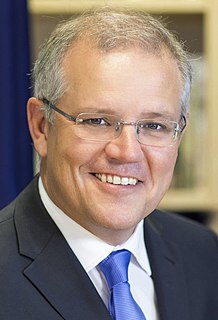
The 2019 Australian federal election will elect members of the 46th Parliament of Australia. The election will be called following the dissolution or expiry of the 45th Parliament as elected at the 2016 double dissolution federal election.
This is a list of candidates of the 2018 South Australian state election. The election was held on 17 March 2018.
SA-BEST, formerly known as "Nick Xenophon's SA-BEST" is a political party in South Australia. It was founded in 2017 by Nick Xenophon as a state-based partner to his Nick Xenophon Team party. In 2018, deputy leader of NXT Stirling Griff said that SA-Best is "a separate entity, a separate association, a separate party" from NXT.

The 2022 South Australian state election will elect members to the 55th Parliament of South Australia on 19 March 2022. All seats in the House of Assembly or lower house, whose current members were elected at the 2018 election, and half the seats in the Legislative Council or upper house, last filled at the 2014 election, will become vacant. The first term incumbent Liberal Party of Australia (SA) government, currently led by Premier Steven Marshall, will seek a second four-year term and will be challenged by the Australian Labor Party (SA) opposition, currently led by Opposition Leader Peter Malinauskas.




